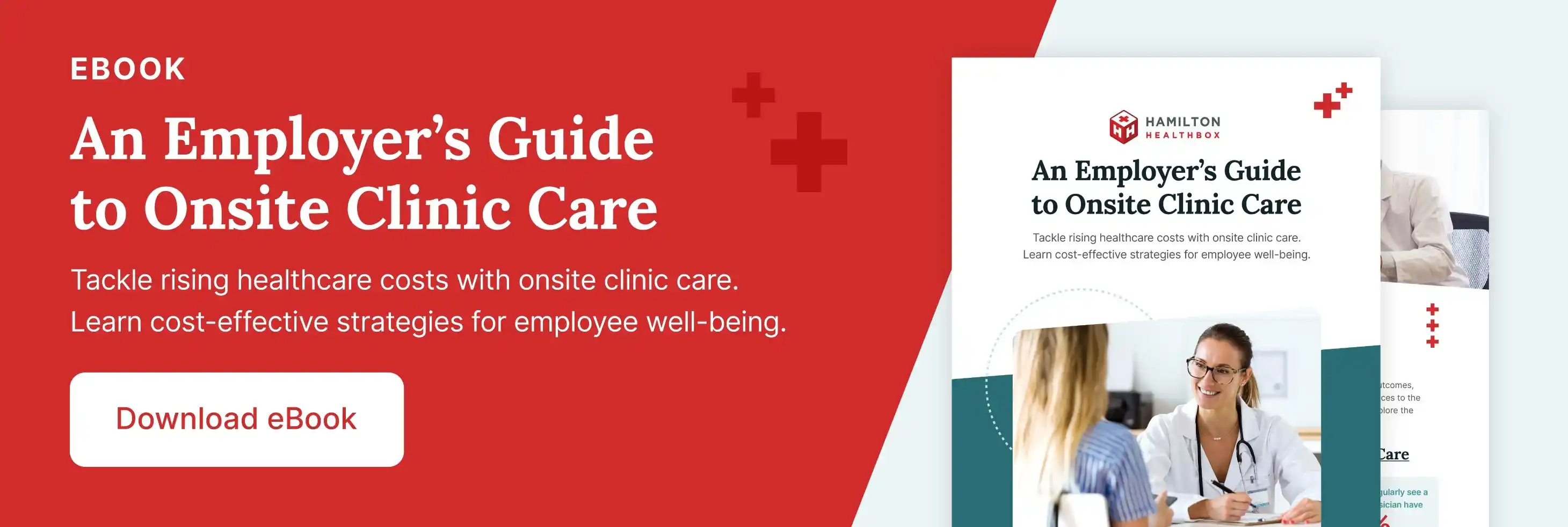
Having access to high-quality primary care is a key to employee health. Frequent encounters with primary care prevent smaller health issues from turning into larger, more expensive ones. An annual physical exam with a primary care physician can help the provider establish a patient’s baseline vitals and assess potential health risks. These regular check-ins also serve as an important opportunity for clinicians to recommend health screenings based on a patient’s age, family history, and existing medical conditions, to make sure the patient is up to date on routine immunizations, and to refill any regular medications.
Today’s employers have a vested interest in ensuring their employees have regular access to primary care. In addition to keeping employees healthy, research shows improved access to primary care can lower overall healthcare costs. Adults who frequently see a primary care physician have 33% lower healthcare costs than those who only see a specialist for their care. And it has even been estimated that the U.S. could save approximately $67 billion each year if patients used primary care healthcare providers as their main care source.
Despite all these benefits for employee health—and potential cost savings for employers—many employees still do not access primary care providers for annual physical exams or other needs. A major reason? Lack of convenience.
Lack of Convenience Leads to Lack of Care and Increased Costs
Taking time off work is inconvenient and stressful for employees. According to one study, the time spent traveling to and from a doctor’s office and waiting to be seen by a provider equates to missing a little more than two hours of their workday for a 20-minute doctor’s visit. The study also found that employees lose approximately $43 in lost productivity, an amount that exceeds the average patient’s out-of-pocket cost for a medical visit. Then there’s the mental stress associated with leaving work for a medical appointment, such as confusion and overwhelm when it comes to selecting care providers, long wait times for appointments due to clinician staffing shortages, and lack of access to transportation, among other challenges.
The same study found that employees taking time off work for medical care also costs employers financially due to lost worker productivity. Researchers estimated that employers lose 1.1 billion hours of employee work time annually in costs associated with employees seeking ambulatory medical care—approximately the total annual hours worked by 563,000 full-time employees. Employers also lose $25 billion annually in opportunity costs.
To address gaps in access to primary care for their employees—while reducing lost productivity and their cost burden—employers need creative solutions. Direct primary care in the form of onsite employee clinics is an excellent option.
What Is Direct Primary Care and How Is it Beneficial?
Direct primary care is care provided by clinicians directly in the workplace, typically in onsite clinics. This type of care can be paired with telehealth services, providing employees round-the-clock access to care. Depending on the size of the employer and location, these clinics, such as those offered by Healthbox™, might be housed inside the physical office space, in a mobile unit in the employer’s parking lot, or in a mobile vehicle that visits an employer’s satellite office locations.
The convenient onsite clinic option has multiple benefits for employee health and numerous advantages for employers. For example, one study, published in the Journal of Occupational and Environmental Medicine, found that use of preventive healthcare services increased significantly for employees by 9% (women) and 14% (men) one year after implementation of an onsite clinic.
In addition, onsite clinics tick many of the boxes when it comes to the qualities employers are seeking in delivering primary care to their employees. These qualities include:
-
Easy access and on-demand care.
Today’s patients are seeking multiple pathways to access care, including virtual options, like telehealth services and brick-and-mortar locations. To better meet patients’ needs, innovative methods to interact with primary care, such as online symptom checkers, also should be available.
-
Integration of mental health services.
The number of patients seeking mental health services in the U.S. has remained elevated since the start of the COVID-19 pandemic, and healthcare workforce shortages continue to impede access, according to recent findings from KFF. Being able to access mental health services in a primary care setting, therefore, has become even more essential to patients’ overall health and well-being.
-
Engaging people before they become patients.
In addition to visiting primary care providers for urgent healthcare needs, patients should know that regular communication and interactions with their primary care clinicians, including during annual physical exams, are key to a healthy lifestyle. Convenient access to primary care via an onsite clinic makes preventive healthcare visits much more viable for employees.
-
A focus on continuous quality.
Essential to any quality healthcare program is tracking and responding to key performance indicators such as quality metrics and patient experience scores. Healthbox™ provides real-time data to employers about how their onsite clinics are benefiting employee health and how they can better meet their patient population’s evolving needs.
-
Helping people navigate the healthcare system.
Healthcare can be overwhelming. The primary care clinicians in an onsite clinic can provide support to employees throughout their healthcare journeys via services such as health and wellness coaching. Prepare the company for transition from fully-insured to self-funded benefits program. Getting employees healthy in advance of transitioning to a self-funded benefits program can make the transition less costly.
Start Bringing Primary Care Access to Employees Today
Healthbox™’s onsite clinics deliver the qualities employers seek and bring high-quality primary care to employees where they will access it – at work. With a hybrid of onsite care and telehealth services to meet employees’ healthcare needs, including vital annual physical exams, employees have convenient and ready access. Employers can design a customized service mix to fit their unique circumstances and patient population with options such as primary care, urgent care and mental health services, chronic care management, and other annual physical offerings, including immunizations, lab work, and X-rays. Part-time onsite clinic options are also available to meet employers’ needs.
To learn more about how Healthbox™ provides the kind of primary care that employers are seeking, schedule a 1:1 meeting with us.


